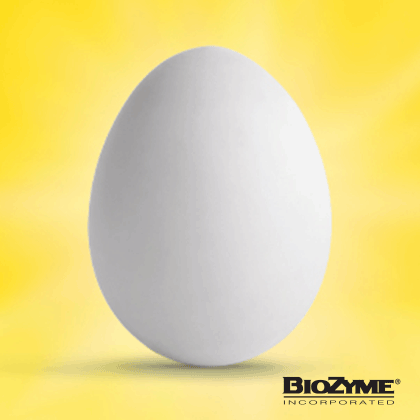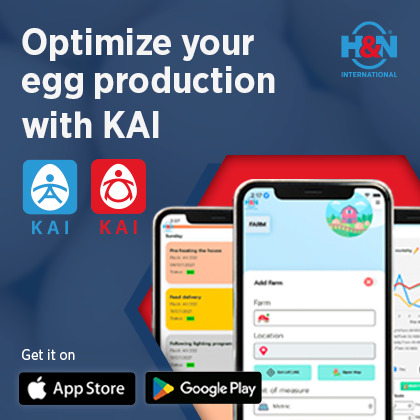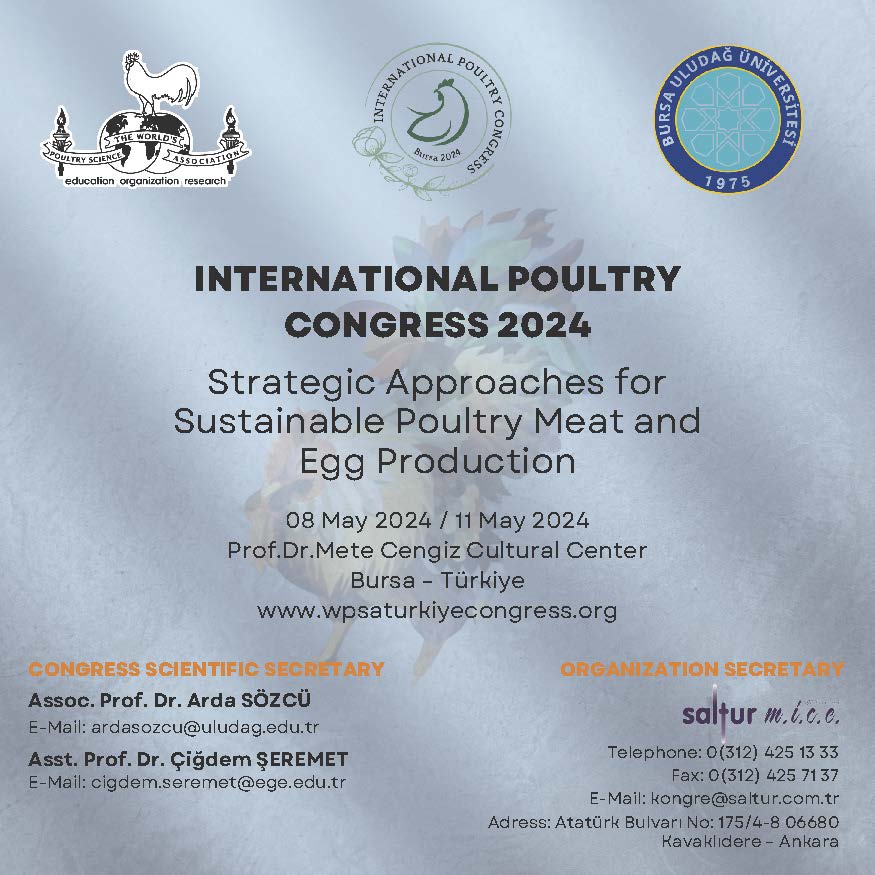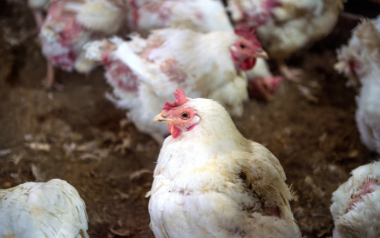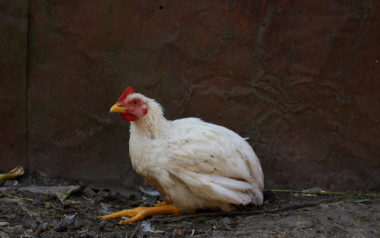Prevention and control of Marek’s disease
Marek's disease continues to be a global threat to the health, viability, and productive performance of broiler breeders, and the virus continues to evolve and gain virulence.
Marek's disease virus "MDV" is a highly contagious herpes virus that can cause:
- Mortality
- Severe immunosuppression
- Tumors
- Lymphocytic infiltrations in different organs and tissues
Other viruses in the retrovirus family are also capable of causing tumor diseases in heavy breeders such as leukosis and reticuloendotheliosis. There may also be sporadic mixed infections of Marek virus and avian retroviruses, making their diagnosis difficult; in addition, spontaneous tumors of non-infectious origin may occasionally be found.
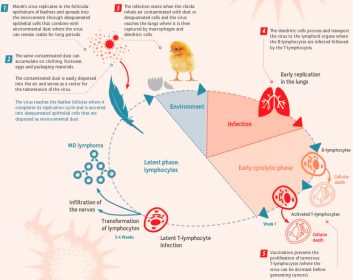
It is important to recognise that, although vaccination can reduce the infection and transmission degrees of the virus , it is unable to completely prevent infection, replication, and release of pathogenic viruses into the environment. It is inevitable that healthy, productive birds free of clinical problems are carriers of pathogenic viruses, will carry pathogenic viruses and become a source of infection for other birds.
Vaccines
Historically vaccination has been a determining factor for the prevention of disease and the growth of the industry. The vast majority of vaccines available are live virus and cell associated.
Live virus vaccines
In the live virus vaccine, the virus replicates and remains within cultured cells for the production of the vaccines, which can be injected: 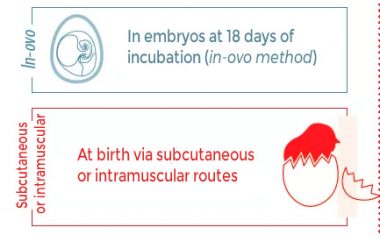
Commercial live virus vaccines
Commercial live virus vaccines include: 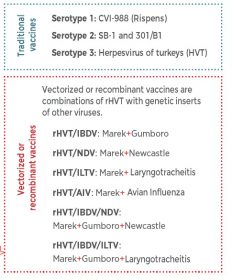
HVT vaccines
The HVT vaccine can be combined with vaccines of: Serotypes 2 -SB-1 and 301 / B1- and / or serotype 1 -CVI-988 (Rispens) -
With the combination of serotypes 1 and 2, the degree of protection is maximised. The combination of HVT with Rispens is the most used to protect breeders against highly virulent viruses.
Recombinant vaccines
Recombinant vaccines contain HVT, which functions as a vector for the insertion of genes that encode immunising proteins from other viruses. They induce immunity against the HVT vector and against the expressed proteins of the foreign virus. Recombinant vaccines should not be used alone in breeders, nor combined with other ordinary HVT or recombinant rHVT viruses, as the response to foreign virus proteins will be compromised.
Vaccine handling and preparation
Cell-associated vaccines are stored in liquid nitrogen (-196 ° C / -320 ° F) and are reconstituted in specific diluents supplied by the manufacturer. Cell-free vaccines are lyophilized and refrigerated, but are not used industrially. Reconstitution and administration of vaccines must be carried out strictly following the protocols recommended by the manufacturer. The strict hygiene of the vaccine preparation room and the vaccination equipment is an essential requirement to avoid contamination.
The importance of constant training
The processes of storage, thawing, reconstitution, hygiene and administration of vaccines require periodic training and routine audits by internal and external quality control specialists. Producers should consult with veterinary specialists familiar with available products, different vaccination strategies, local challenges, and vaccine selection, handling, preparation, and administration processes.
Vaccine administration
Administration of in-ovo vaccines has improved protection against disease and also suggested a positive effect on the non-specific immune response against other agents. 
Reconstituted vaccines should be kept refrigerated and should be administered over a period of 30 to 60 minutes, in addition to being periodically gently shaken to prevent cell sedimentation and ensure a uniform dose.
Vaccination failures
TO CONTINUE READING REGISTER IT IS COMPLETELY FREE
Access to articles in PDF
Keep up to date with our newsletters
Receive the magazine for free in digital version
REGISTRATION
ACCESS
YOUR ACCOUNT
LOGIN
Lost your password?

